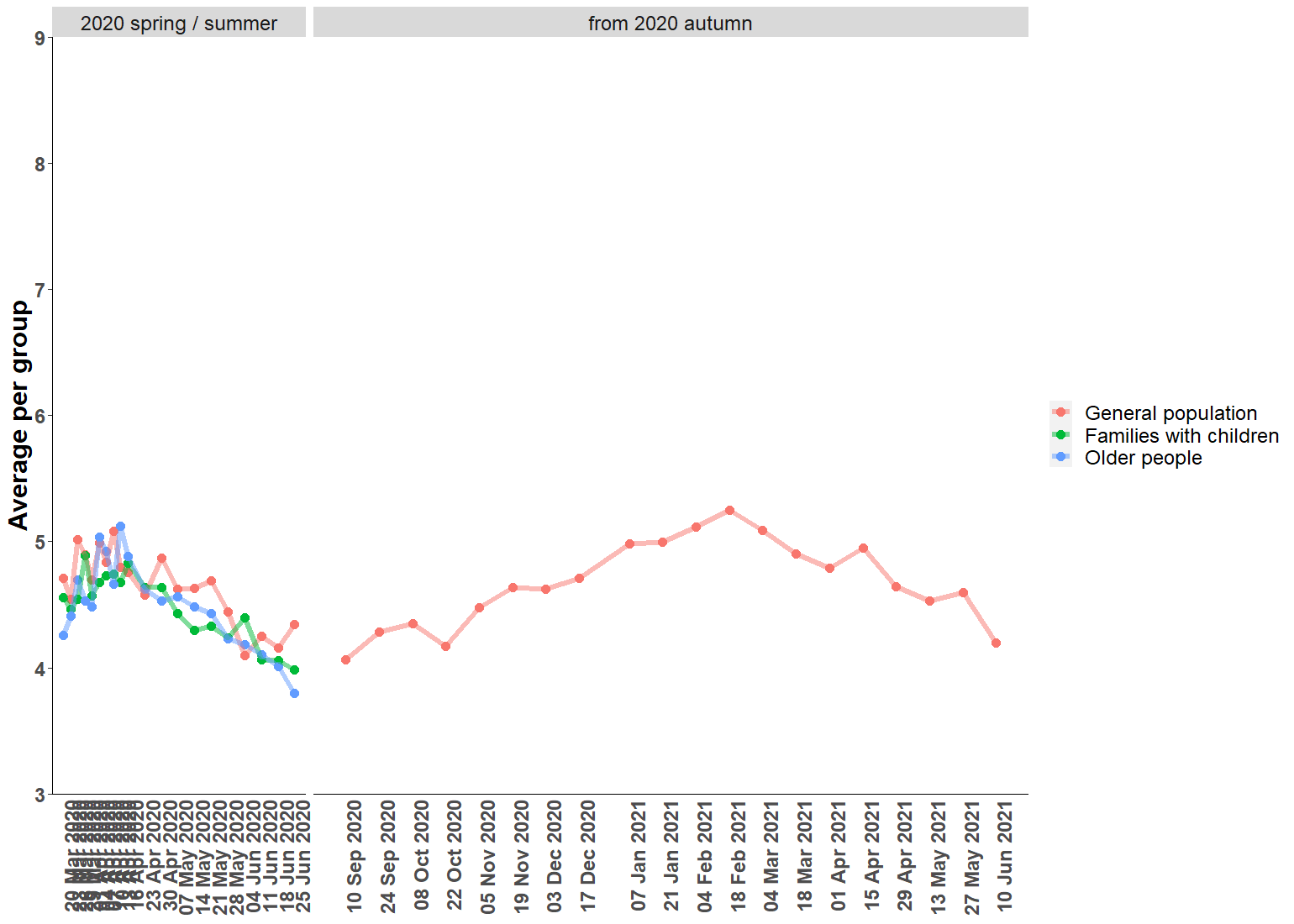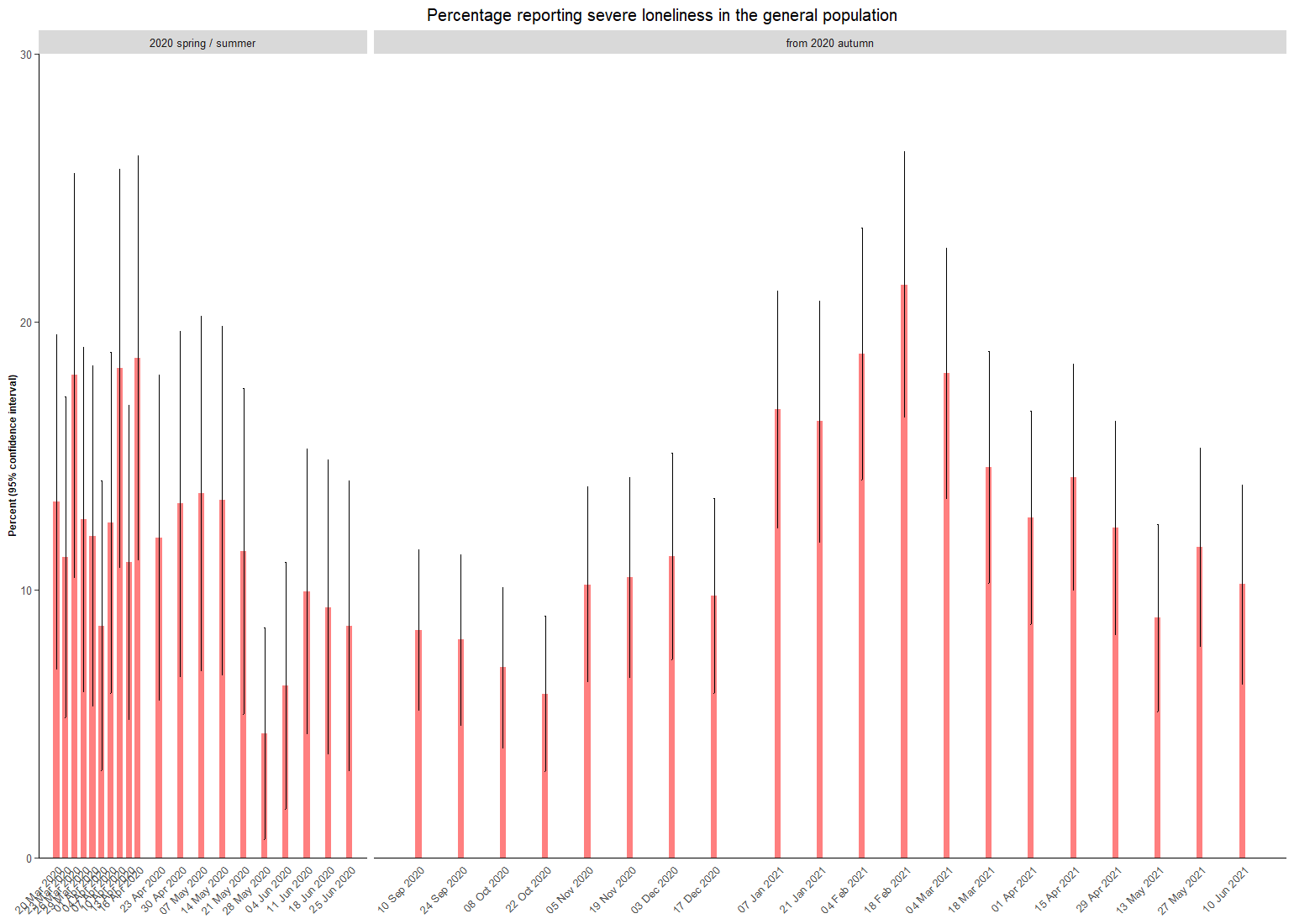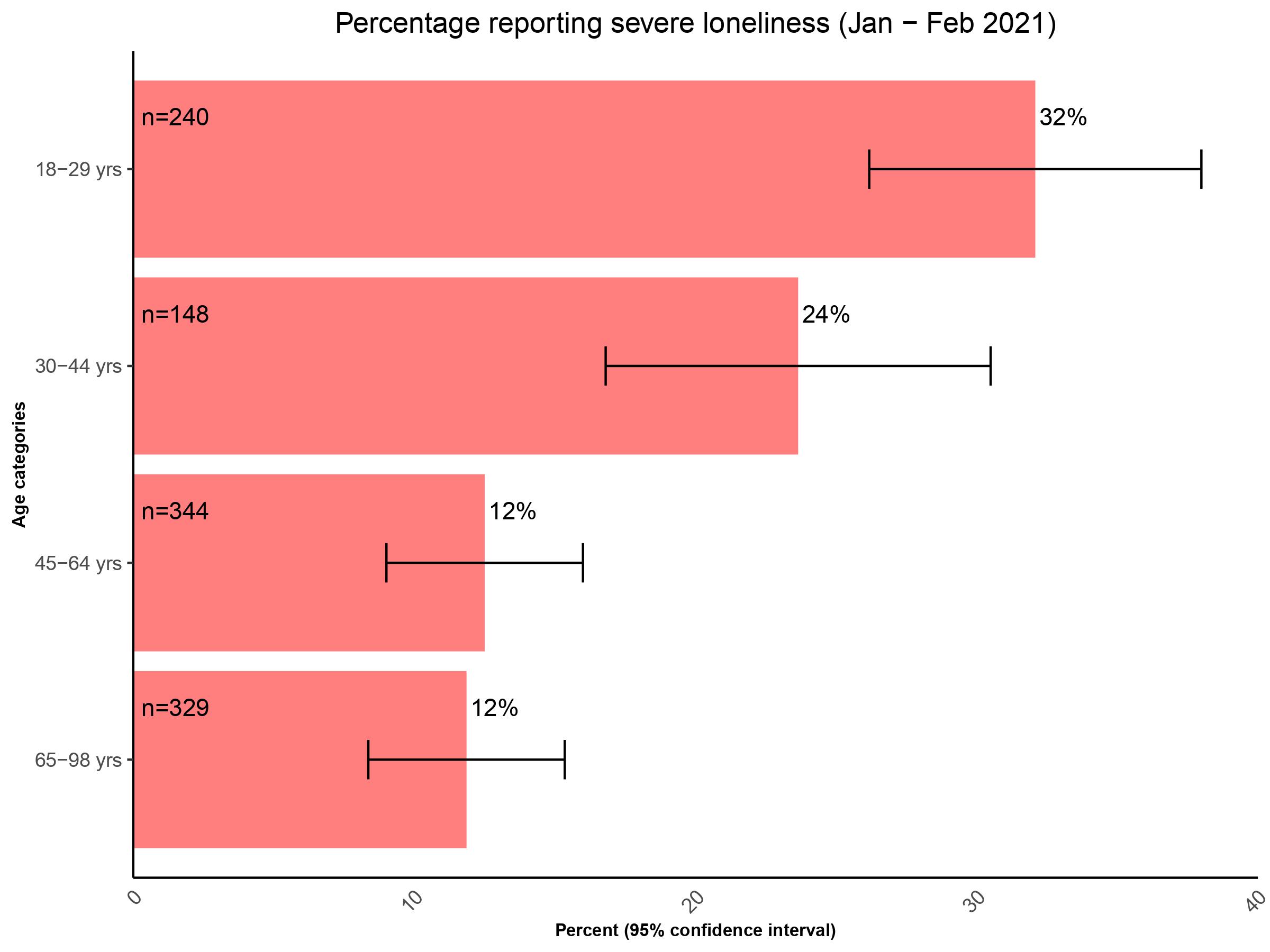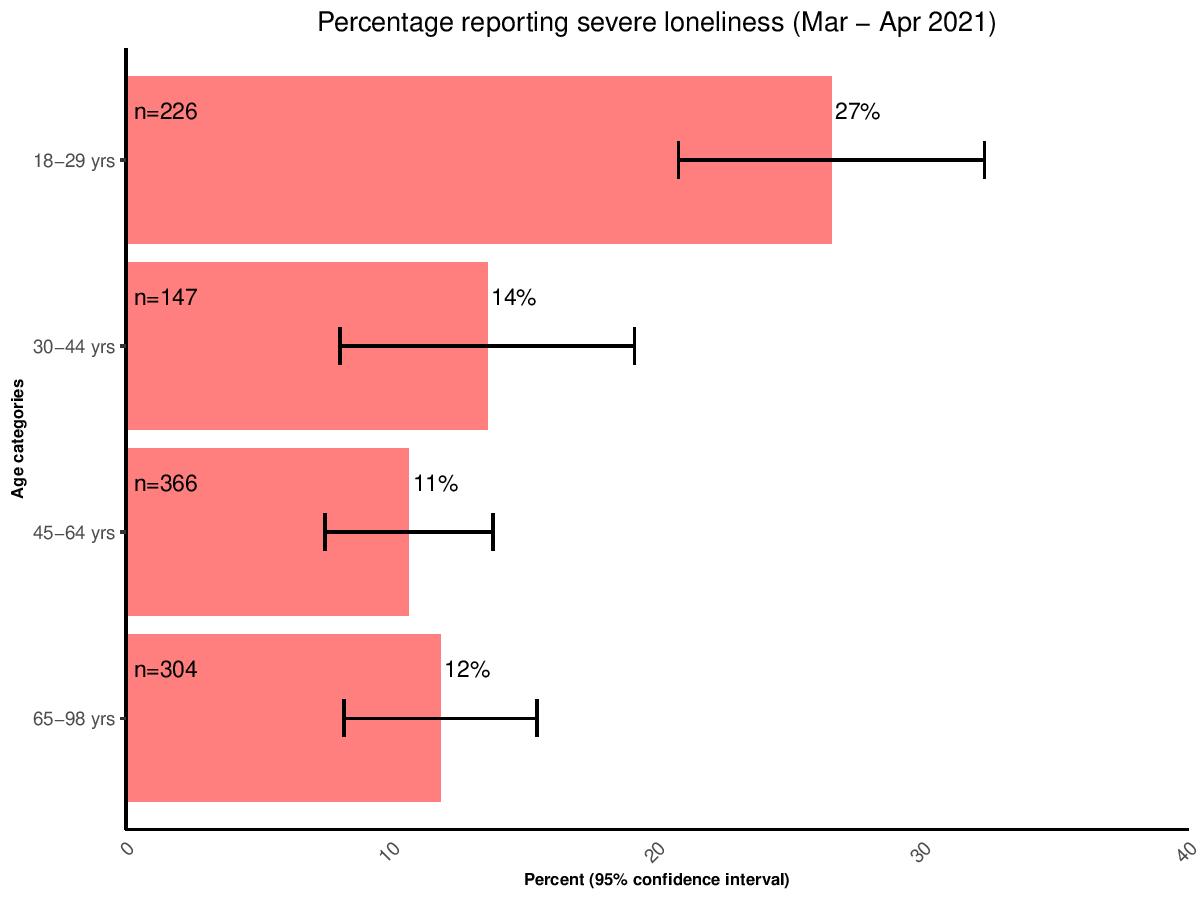People’s levels of loneliness since the start of the COVID-19 pandemic – an update
During autumn and winter 2020, people living in Denmark experienced increasing restrictions – these culminated in government officials and health authorities declaring a second nationwide lockdown starting on 25 December 2020. Additional measures, such as limiting gatherings to five people, were introduced in early January 2021 in response to a higher-than-ever number of daily COVID-19 deaths. As such, it is perhaps not surprising that our latest comprehensive report on loneliness from January 2021 indicated that, since September 2020, people living in Denmark have been experiencing gradually increasing feelings of loneliness.
In collaboration with Epinion, a Danish consumer-research company, we have been asking approximately 250 adults (between the ages of 18 and 98) every second week to complete the Copenhagen Corona-Related Mental Health (CCMH) questionnaire and rate their own mental health using validated questions. Below, we present statistics on the level of loneliness from >10,000 individuals who responded to our questionnaire between March 2020 and April 2021.
The UCLA Loneliness Scale is a widely used and recognised instrument for measuring loneliness; in our study, we used a shorter validated version of the UCLA scale called T-ILS. Our survey participants were asked how often they experience feeling lonely (i.e., whether they missed having company, felt left out, and felt isolated). Based on previous studies, individuals who scored high (≥ 4) on the T-ILS scale (0–6 points) were defined as being severely lonely.
The worsening trend in loneliness levels, which was presented in our previous report, continued and peaked in mid-February 2021 with more than one in five of all respondents reporting severe loneliness. Of note, the levels recorded in this period were worse than early-pandemic levels from March 2020 – both in terms of average levels of loneliness and the percentage of the general population reporting severe loneliness.
A 3-item scale measuring loneliness ranging from 3 to 9 (9 is most lonely)
Click on the figure to enlarge
Development of severe loneliness
Click on the figure to enlarge
We also examined the proportion of individuals in four age groups who reported severe loneliness: from the youngest to the oldest, these groups are defined as <30, 30–45, 45–65 and >65. Between September and October 2020, 12%, 11%, 6%, and 4% of the people in these age groups, respectively, reported severe loneliness. As overall mental health worsened during autumn and winter 2020, these percentages changed to 15%, 16%, 10%, and 7%, respectively, for the November-December 2020 period.
Compared to these statistics, a dramatic increase in loneliness was observed in all age groups in the January-February 2021 period. This increase was most prominent in the <30 and 30–45 age groups, with approximately one in three (32%) of those <30 and one in four (24%) of those between 30–45 reporting severe loneliness. In contrast, only 12% of the two older age groups reported severe loneliness during this period.
Data collected between March and early April 2021 shows a slight improvement. However, as of April 2021 we are still observing high levels across all age groups: from the youngest to the oldest age groups, 27%, 14%, 11%, and 12%, respectively, have reported severe loneliness.
While the latest figures are indicative of an improving mental-health landscape in Denmark (see our biweekly barometers for a comprehensive overview), we must caution that it remains too early to tell whether trends have definitely reversed. In light of the recent easement of some restrictions and an overwhelmingly positive attitude towards COVID-19 vaccination in Denmark (as of this writing, ~9% of the population had received two doses of vaccines [ourworldindata.org]), our continued data collection over the next months will be crucial to accurately document and analyse potential shifts in key mental-health indicators amongst the Danish population.





